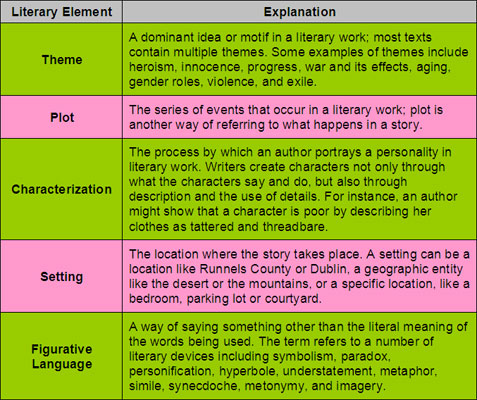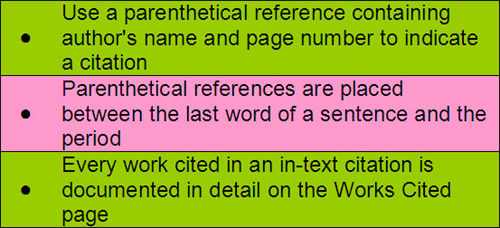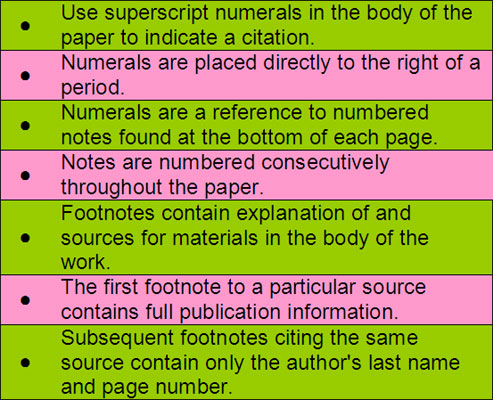 username@email.com
username@email.com
In this lesson, you will learn about writing an essay that discusses a selection of literature, the use of details from literature as evidence in writing, and the standard formats of bibliographic entries.
When writing an essay about a work of literature, it is important to discuss the work in terms of its various literary elements, the constitutive components of a literary work.

Planning Your Essay
A strong essay on a work of literature needs to engage some of these topics but not necessarily all of them. Instead of simply reciting the various themes, describing the setting, and recounting the plot, your essay should go a step further and analyze how the author’s use of these various elements contributes to the overall effect of the work.
The best way to begin is by reading the work actively. Read with your pen in hand and underline examples of figurative language and characterization. Make notes in the margins about the plot and the setting. After you’ve finished reading, pick two or three elements that stand out as the most interesting to be the focus of your discussion.
Organizing Your Essay
Once you have selected the elements you’d like to write about—for example, characterization and the theme of lost innocence in Hemingway’s “Hills Like White Elephants”—organize your notes around those elements. Think about how the elements you’ve selected relate to each other and the overall effect of the book.
As you organize your notes, you should be working on some kind of outline that sketches out your argument and points toward a thesis. For instance, if you were writing about “Hills Like White Elephants,” you might argue that Hemingway uses the element of characterization to develop the theme of the loss of innocence. In a standard five-paragraph essay, you might decide to spend one paragraph on characterization, one paragraph on how characterization reveals the theme of innocence lost, and one paragraph on the importance of the theme.
In any form of writing, it is imperative that you provide evidence to support your arguments and interpretations. In literary essays, that evidence usually takes the form of specific examples from the text.
The examples you cite from the text need to be concrete and thoroughly detailed. In addition to supporting your judgment and analysis of the text, the examples should convey a distinct image that will help readers form an impression of the work.
If you wanted to make the claim that the female character in “Hills Like White Elephants” is naïve, you would need to do more than simply assert that this is the case. You might cite as evidence the fact that she repeatedly tells her boyfriend that she does not want them to stop traveling around Europe and hanging out in cafés even though she is pregnant and wants to keep the baby.

Depending on what kind of essay you are writing, you might be able to employ other types of evidence as well. In a research paper, for example, you could research the author’s biography and cite episodes from his or her life to support your argument. You could also cite articles from experts in the field. However, the strongest evidence is evidence that comes directly from the text you’re analyzing.
After you’ve cited specific details from the text to support your claims about the elements of a literary work, it is important to provide analysis as to why the theme (or plot device or metaphor) you are discussing is important. One of the questions you should ask yourself as you write your essay is, “So what? Why is this important? What’s the larger implication of my argument?”
Again, a good way to think about the importance of literary devices is in terms of the literature’s overall effect or purpose. There are no absolute answers here; you are providing an interpretation of the work. However, your thesis, your use of details and the quality of your analysis will determine the strength or weakness of your interpretation.
Whenever you draw on someone else’s work in a piece of writing, it is imperative that you credit that person for his or her work. Using someone else’s ideas in your writing and presenting those ideas as your own is plagiarism.
To avoid plagiarizing, use one of the following three systems to cite any work to which you refer in your writing.
In-text Citation
Also known as the works cited method, in-text citation is the most common method for crediting citations in the body of a paper.

An in-text citation looks like this:
. . evidence of Lear’s madness (Smith 37).
The sources referenced in in-text citations are compiled on a page at the end of the document that is titled “Works Cited.” Entries in the works cited section are listed as follows:
A works cited entry for a book with one author would contain the author’s name, the book’s title, and its publication facts. For example:
Smith, Bill. A Textual Analysis of King Lear: Interpretation and Interpolation. New York: Smith Publishing, 2005.
Rules for formatting works cited entries vary based on the publication type and number of authors.
Bibliographic footnotes are an alternative to the in-text citation method.

A footnote in text would look like this:
. . . evidence of Lear’s madness.1
The footnotes themselves appear at the bottom of any page whose text contains a note. In the footnotes section:
A footnote that represents the first citation of a work would contain the author’s name, the title of the work, its publication facts, and the page number of the reference and look like this:
1Bill Smith, A Textual Analysis of King Lear: Interpretation and Interpolation (New York: Smith Publishing, 2005) 37.
And subsequent footnotes that refer to the same work would read:
8 Smith 96-99.
Bibliographic endnotes are very similar to bibliographic footnotes. The only difference is that endnotes are listed on a separate page at the end of a piece of writing, whereas footnotes are listed at the bottom of each page.
Bibliographic endnotes are listed on page that is simply titled “Notes.” The first line is one double space below the title, and the rules for formatting each entry are identical to the rules for formatting footnotes.
All the other rules for placing the numbers in the text and formatting initial and subsequent citations are the same. The choice between endnotes and footnotes is a matter of taste. Each serves the same function: to document details in the text.